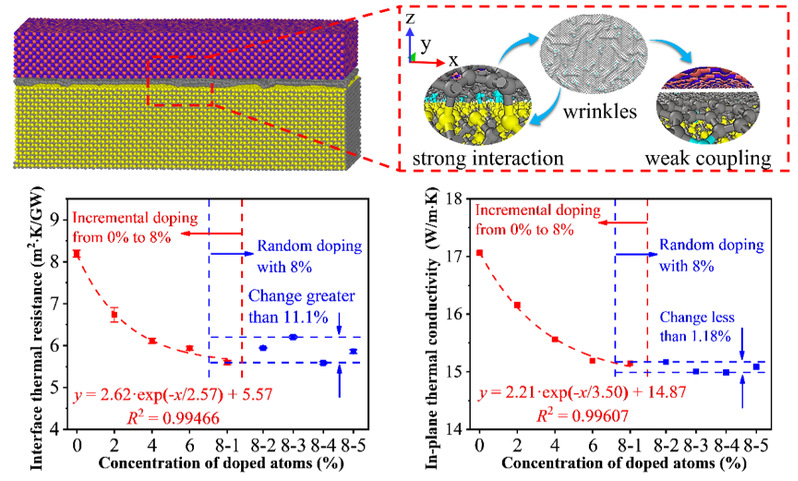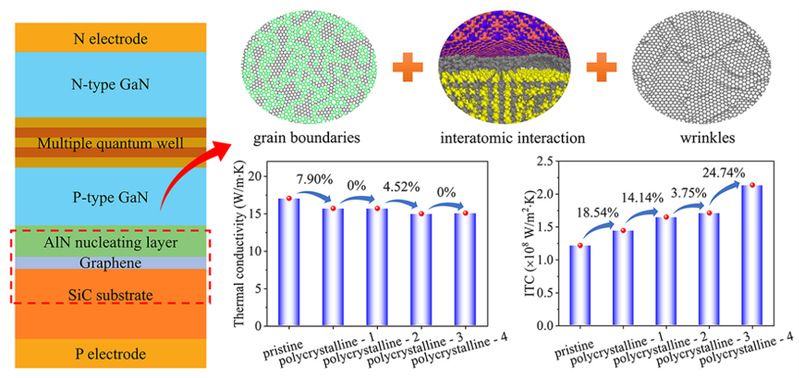Dr. YANG Bing and Professor ZHENG Hongyu published an article entitled Thermal transport mechanism of AlN/SiG/3C-SiC typical heterostructures” in Materials Today Physics. Understanding the heat transfer mechanism of typical structures in high-power chips is essential for chip design with better engineered heat transfer performance. Here, the interfacial thermal resistance (ITR) and in-plane thermal conductivity (TC) of AlN/Si-doped graphene/3C-SiC (AlN/SiG/3C-SiC) heterostructures are systematically studied by molecular dynamics simulation. Silicon doping can reduce the ITR by as much as 31.72% with a concentration of 8%, which is verified furthermore by energy transport and thermal relaxation time. Multiple analyses indicate that Si doping results in the enhancement of strong interaction between 3C-SiC and SiG, the decline of weak interaction between AlN and other two materials due to the accumulation of wrinkles in SiG, and finally promotes the phonon transmission of 0-18 THz at interfaces owing to the dominance of strong interaction. In addition, the in-plane TC is reduced by 11.24% when the Si-doped concentration is 8%. By analyzing the stress field, SiG and two-layer atoms on the interface side of 3C-SiC are mainly responsible for thermal resistance, and SiG leads to the exponential dependence between TC and doping concentration. The results also show that the ITR is sensitive to the random doping positions, while the TC is not. We believe the results in this work will have important guiding significance for enhancing the thermal transport performance of high-power chips.

Fig. 1 Effect of silicon doping on heat transport of heterostructures and influencing factors
In addition, Dr. YANG Bing and professor ZHENG Hongyualso studied the effect of graphene with different crystallinity on the heat transport of AlN/graphene/3C-SiC typical heterostructures and the relevant physical mechanism. This study shows that polycrystalline graphene has better interfacial thermal conductance than single-crystal graphene. The analysis shows that the grain boundaries lead to the increase of C-Si covalent bonds, however, the covalent bonds further lead to the local tensile strain and wrinkles. The increase of covalent bond enhances the interface thermal conductance, while the local tensile strain decreases the interface thermal conductance, and the wrinkle results in the fluctuation of van der Waals interaction at the interface. The comprehensive effect of various influencing factors leads to the increase of interface thermal conductance. This work published a paper entitled Thermal transport of AlN/Graphene/3C-SiC typical structures with different crystallinity of graphene in ACS Applied Materials & Interfaces.

Fig. 2 Effect of polycrystalline graphene on heat transport of heterostructures and influencing factors


